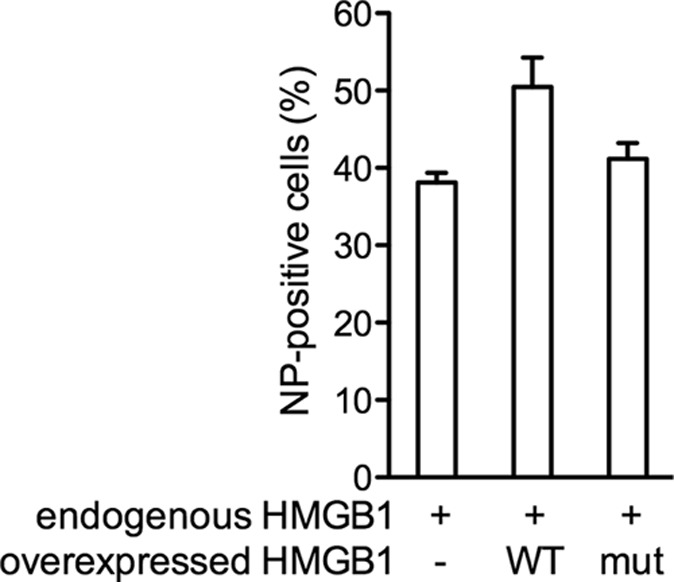Fig 9.

Effect of a DNA-binding-defective HMGB1 mutant on influenza virus replication. 293T cells were transiently transfected with a plasmid allowing the expression of the wild-type or a DNA-binding-defective HMGB1 or mock transfected. At 24 h posttransfection, the cells were infected at an MOI of 0.3 PFU/cell with WSN influenza virus. At 6 hpi, the HMGB1 and NP expression levels were evaluated using indirect immunofluorescent assay and flow cytometry. The percentages of NP-positive cells were evaluated in the cellular subpopulations expressing endogenous levels of HMGB1 only (−) and in subpopulations overexpressing the wild-type (WT) or mutant (mut) HMGB1 protein. The data are expressed as means ± the SD of duplicates and are representative of three independent experiments.
